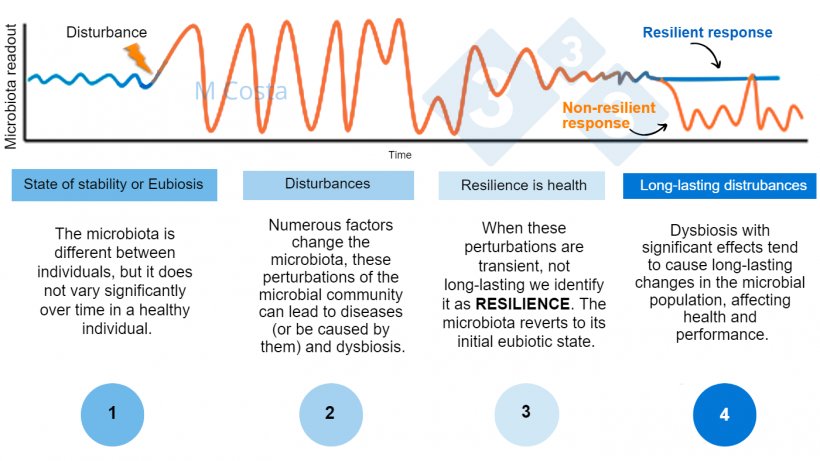The idea of manipulating the microbiota to benefit people and animals is not a new one. Fecal microbiota transplantation was first used to control Clostridioides dificille infection in humans in 1958! But, how can we use microbiota modulation (or microbiome engineering) in swine production?
Attempting to modulate the microbiota begins with the assumption that dysbiosis (imbalance of microbial communities leading to a diseased state) is present. However, to date there is no consensus on the definition (or how to define) a healthy microbiota. As discussed in our previous articles, there is so much variation between individuals (and within them) that this is a very difficult task. We know, for example, what a pig with diarrhea looks like. There is a strict clinical definition (increased frequency of defecation and volume of feces due to increased water content). As simple as it may sound, microbiome science is still in its infancy and the general definition of a healthy microbiota is still lacking. However, it has been suggested that the hallmark of microbiota health is not the response to perturbation, but the post-perturbation resilience.

Wait, what?

Figure 1 exemplifies this graphically. Microbiota resilience is the capacity of the microbiota to revert to a state that is similar to a pre-disturbance, healthy state. Microbiotas that are not resilient tend to remain in a disturbed state, which is associated with susceptibility to disease (e.g. C. dificille infection in pigs and humans). Thus, microbiota “modulation” or “manipulation” is often aimed at improving the overall microbial community resilience. The swine industry witnessed the emergence of many modulation interventions that target the relative distribution of bacterial species/strains, the actual number of bacteria, their metabolic activity or their interactions with the host. These are largely based on dietary ingredients/prebiotics, probiotics, postbiotics. Other technologies are being developed to a commercial stage, such as transplants and bacteriophages. Curated databases are available to provide guidance regarding what strategies have evidence showing their effectiveness against given human diseases (e.g. http://www.probioticchart.ca). Unfortunately, there is no such counterpart (yet) available for veterinary species. So, where are we at with using microbiota modulation strategies in swine production?
First, there are two important aspects to begin this discussion:
- Punctual changes in the composition of the microbiome frequently occurs naturally (e.g. day/night cycles, increased exercise, stressful events). These are normal and expected.
- Compositional changes are meaningless without causative effects.
To effectively change the microbiota composition requires a significant effort either via multiple stimuli (daily treatments over a period of time) or a substantial single stimulus (large bolus treatment). However, the reader should be aware that in microbiome research correlation does not imply causation. It is difficult or impossible to infer causation based on observational data only (aka studies that describe changes in the gut microbiome composition following an intervention). This type of study is by far the most commonly performed approach, likely because the methodology used is easily accessible now. While these studies should not be ignored, as they provide important initial data regarding the intervention studied, they do not provide data to support causality. The gold standard for obtaining such data are simplified models (e.g. cell or mouse models), where many factors can be controlled at once. These are expensive and time consuming, thus many interventions are not fully evaluated leaving the industry with data that is based on correlation only. It is suggested that this barrier might be the most important one to overcome before we can unleash the full power of microbiota modulation for animal performance and health. But, the future is bright for those willing to invest and explore!



